Building Bridges: Custom CRM Integration with Legacy Systems
In today's digital landscape, businesses often face the challenge of integrating new technologies, such as custom Customer Relationship Management (CRM) solutions, with existing legacy systems. Legacy systems, while robust and reliable, may pose limitations in terms of data accessibility, interoperability, and overall operational efficiency. However, with strategic planning and the right integration strategies, businesses can leverage custom CRM solutions to enhance operational efficiency and maximize the value of their legacy systems. This blog explores effective strategies for integrating custom CRM solutions with legacy systems, highlighting benefits, challenges, and best practices.
![[object Object]](https://clipl-web1.sgp1.cdn.digitaloceanspaces.com/images/clzmeq0ec00t632qg89dthstg.png)
Legacy Systems: Refers to older, established technologies, often characterized by stability, reliability, and extensive use within an organization. They may include databases, ERP systems, and proprietary software solutions that have been in place for many years.
Custom CRM Solutions: Tailored CRM platforms designed to meet specific business needs, offering flexibility, scalability, and advanced functionalities beyond what standard off-the-shelf solutions provide.
![[object Object]](https://clipl-web1.sgp1.cdn.digitaloceanspaces.com/images/clw7br1ug003e4crz8w6ygj2t.png)
- Data Incompatibility: Legacy systems may use outdated formats or databases that require conversion or mapping to align with modern CRM data structures.
- Integration Complexity: Different technologies and protocols used in legacy systems may complicate integration efforts, requiring customized solutions and middleware.
- Security and Compliance: Ensuring data security and regulatory compliance when transferring data between systems with different security protocols and standards.
- User Adoption: Resistance from employees accustomed to legacy systems, requiring training and change management strategies to facilitate smooth adoption of the new CRM solution.
![[object Object]](https://clipl-web1.sgp1.cdn.digitaloceanspaces.com/images/clu85g32c004p4irz90k4e9u5.png)
Comprehensive Assessment
- Evaluate Legacy System Capabilities: Understand the functionalities, data structures, and integration points of existing legacy systems.
- Identify Integration Goals: Define clear objectives for integrating the custom CRM solution, such as improving data accessibility, streamlining processes, or enhancing customer insights.
APIs and Middleware
- Utilize APIs: Application Programming Interfaces (APIs) facilitate communication and data exchange between different systems. Customize APIs to bridge the gap between legacy systems and the new CRM solution.
- Middleware Solutions: Implement middleware platforms that act as intermediaries, translating data formats and managing communication protocols between disparate systems.
Data Mapping and Transformation
- Data Mapping: Map data fields between the legacy systems and the custom CRM solution to ensure accurate data transfer and synchronization.
- Data Transformation: Convert data formats as needed to align with the structure and requirements of the CRM solution, ensuring consistency and usability.
![[object Object]](https://clipl-web1.sgp1.cdn.digitaloceanspaces.com/images/clu85gvvd004t4irzgz1cbrbk.png)
Incremental Implementation
- Phased Approach: Implement integration in stages, starting with essential functionalities or departments to minimize disruption and facilitate testing and adjustment.
- Pilot Testing: Conduct pilot tests to identify and resolve integration issues early, involving stakeholders and IT teams to ensure alignment with business objectives.
Security and Compliance
- Data Encryption: Secure data transmission between systems using encryption protocols to protect sensitive information.
- Compliance Checks: Ensure integration processes comply with industry regulations (e.g., GDPR, HIPAA) governing data privacy and security.
Training and Support
- User Training: Provide comprehensive training sessions for employees on using the integrated CRM system effectively, emphasizing its benefits and functionalities.
- Technical Support: Establish support channels and resources to assist users with integration-related queries and issues, ensuring smooth transition and ongoing operational efficiency.
![[object Object]](https://clipl-web1.sgp1.cdn.digitaloceanspaces.com/images/clu85jyp0004z4irzhfpf56yv.png)
- Enhanced Data Accessibility: Centralize and streamline access to customer data across departments, improving decision-making and customer service.
- Operational Efficiency: Automate workflows and eliminate manual data entry tasks, reducing errors and improving productivity.
- Scalability and Flexibility: Scale operations and adapt to changing business needs more effectively with a flexible CRM solution integrated with legacy systems.
- Improved Customer Insights: Gain holistic views of customer interactions and behaviors, enabling personalized marketing strategies and enhanced customer satisfaction.
Conclusion
Integrating custom CRM solutions with legacy systems presents challenges but also offers significant opportunities to enhance operational efficiency, data accessibility, and overall business agility. By leveraging strategic integration strategies, such as APIs, middleware, and phased implementation approaches, businesses can bridge the gap between old and new technologies effectively. Embrace the potential of custom CRM integration to build bridges that connect disparate systems, optimize workflows, and empower your organization for continued growth and success in the digital age.























